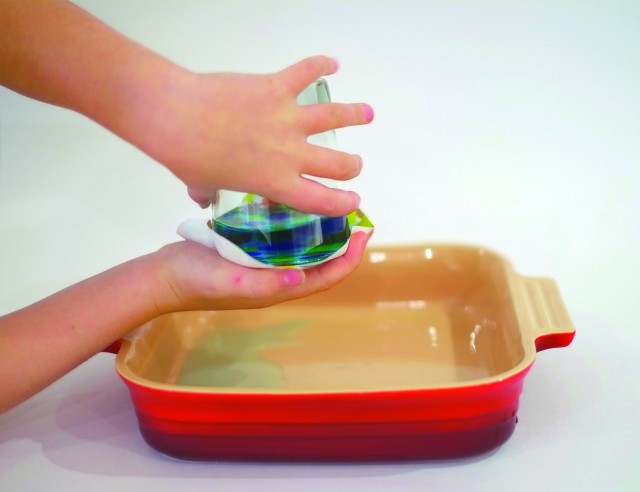Can you make water float? We bet you can. No, you don’t need to be a wizard or a witch. You don’t need to cast a spell. There’s nothing magic about it at all, in fact. You can make water float using good, ol’ fashioned, awesome science. The “trick” to this experiment is air pressure.
In this experiment, you’re basically going to pour water in a glass, put a slip of paper over the glass, turn the glass upside down, and watch as air pressure keeps the paper in place—and the water “floating” in the glass.
If you want to get really deep into this experiment, you can try to increase the amount of water each time. Or keep the same amount of water and decrease the size of your paper. Or go ahead and get a bucket and some cardboard and see if that will work. Fun times on a summer day for sure.
Here’s Why It Works
Air abounds. It’s everywhere. We breathe it, walk through it, jump against it. But air is almost constantly at war with, well, everything—even itself. We experience weather and wind because different stacks of air press against each other, pushing the layers in different directions.
That gentle breeze? That hurricane gust? That’s air at war with itself.
Where there’s air, there’s air pressure. It’s what makes airplanes fly and keeps your car tires rolling nimbly down the road. Or, in this case, it’s what makes water float.
In the first part of the experiment your lab partner will simply pour water out of a glass and watch gravity pull the water down and into the sink. The water fell. Surprise, surprise. You knew that was going to happen.
Ahh, but enter air pressure—the force that bests gravity in this experiment.
In the next part of the experiment—when you’ll add a card to the top of the glass and then turn the glass upside down—the air pressure under the glass presses up against the card, creating a force strong enough to cancel out the effects of gravity and keep the water in the glass. Like I said, air pressure is everywhere.
Here’s What You Need
- A small glass of water
- A sink or bathtub over which to do this experiment. Or just go outside. Or do it over the kitchen floor if you’re really daring (and willing to clean). Up to you.
- An index card or piece of construction paper large enough to cover the opening of the glass
Here’s What You Do
1. Fill the glass with as much water as you’d like. No need to be precise. Now have your lab partner turn the glass upside down, or maybe over her head on a hot day. That’s right. Go for it. See what happens. The water pours out, right?
2. Now let your junior mad scientist fill the glass again. No need to measure, although for this part, the more you add, the more difficult the experiment becomes. Maybe start half full and go from there.
3. Now that you have a half-filled glass of water, have your lab partner put a card or paper on top of it and press down firmly, while rotating the cup until it’s upside down. Now, have your lab partner remove her hand, leaving the piece of paper in place. Did it work? Did the water remain in the glass? If this doesn’t work for you right away, try a larger piece of paper, or less water and watch as the water stays in place.
Want More?
The faster an air particle is moving, the lower its pressure. It basically doesn’t have time to exert force. Here’s a fun party trick to test it out: The next time you have some helium balloons on hand, hold two of them by the strings until both are at eye level and about 6 inches apart from each other. Now blow hard in the space between them. Notice how the balloons touch? By blowing, you just decreased the air pressure between them so that the air pressure around the balloons forces them together. Air. At. War.
Did you make water float? Tell us in the comment section below!
Mike Adamick is a stay at home dad and author of Dad’s Book of Awesome Projects (Adams Media, 2013). He also writes for the Adventures in Learning science blog at PBS.org, and many other sites. You can find a copy of his book for $13.59 on Amazon.com.
Photos by Mike Adamick. Excerpted from Dad’s Book of Awesome Science Experiments by Mike Adamick. Copyright © 2014 F+W Media, Inc. Used by permission of the publisher. All rights reserved.











